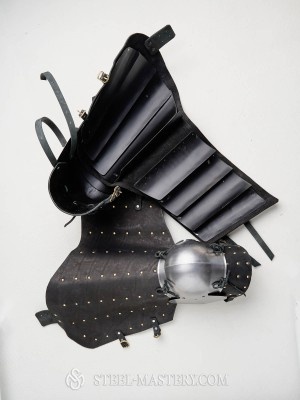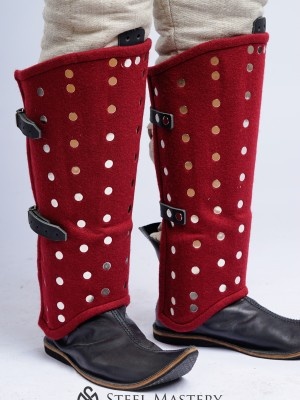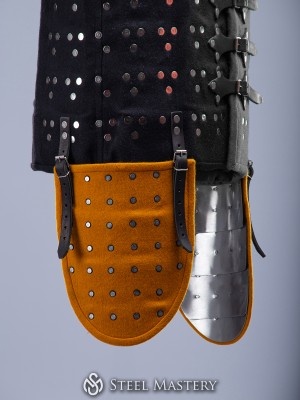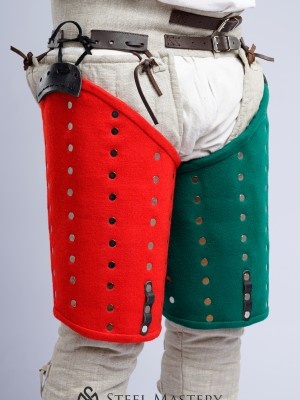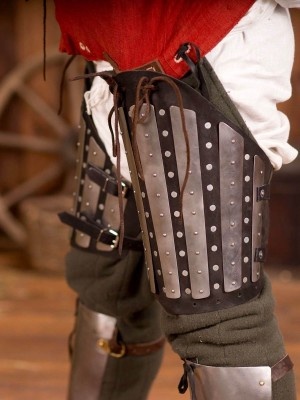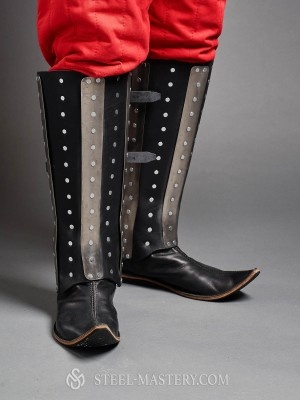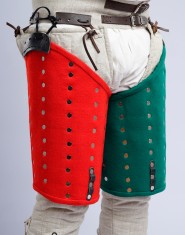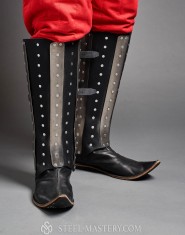Acerca de Protección para piernas de brigandina
Brigandine leg protection
Brigandine leg protection is presented in this section. Here you can see various models of medieval defense, which was widespread in Вyzanthium, Europe and Asia.
We make every model by hands according to customer’s parameters and wishes. Brigandine and splinted armour is based on the original samples, which you can see in the old manuscripts, in museums or on the gravestones.
To order any type of armour, you need few simple actions:
- Open the wished item;
- Choose type and thickness of metal plates;
- Define material, such as leather, velvet, wool or suede;
- Select metal for rivets and buckles (steel or brass)
If you have any problems with order, please contact our manager. We’ll help you to define your size, required model and its complement.
Once all options have chosen, you need to add item to the cart and make a payment. After that, manager will contact you with measurement request and specification of order’s details.
All samples of brigandine and splinted bracers, bicep protection and full arms are perfect for participation in the tournaments of medieval fencing, historical festivals, bohurts and reenactment events. Depending on the complement, such defense is compliant to the standards and rules of such social movements, as SCA (The Society for Creative Anachronism), HEMA (Historical European Martial Arts), HMB (Historical medieval battles).
If you did not find the wished armour in this section, we can make it individually for you. Just send picture with detailed description to [email protected]. Then we will quote you and discuss details of order.
Many images of brigandine and splinted armour have survived to the present days. Such type of limb protection was widely used in the XIV-XV centuries. Some sources speak that brigandine parts appeared even earlier.
Even when plate armour came in use, brigandine defense was popular. The reason of popularity was low price. Also, it was much easier to make such gear – any experiences armourer could meet such task.
Gravestone of baron Hugh Hastings (early XIV century) shows him in armour, part of which are brigandine tassets. It’s easy-to-see level rows of rivets’ heads. Chainmail stockings and plate knee caps are additional parts of legs protection. Such combination of defense gear is typical for that period.
To enforce protection properties, crafters used metal strips and plates, which were riveted to the base. Such harness was more reliable and rather elastic. Both, tassets and greaves were being made this way. You can see good example of splinted protection on the gravestone of Günther von Schwarzburg (1349 year), where count is dressed in the splinted armour.
Thigh protection and greaves were fixed from the back side of leg with leather belts. With straps, warrior attached them to the chausses or holes in the belt. Together with plate knee caps, knight had reliable protection and could fight in mounted or dismounted actions.
Read more information about brigandine and limb protection in our article.

